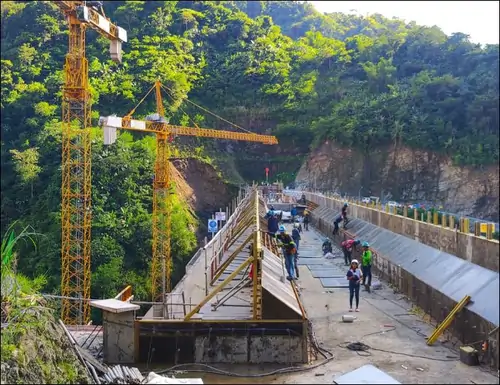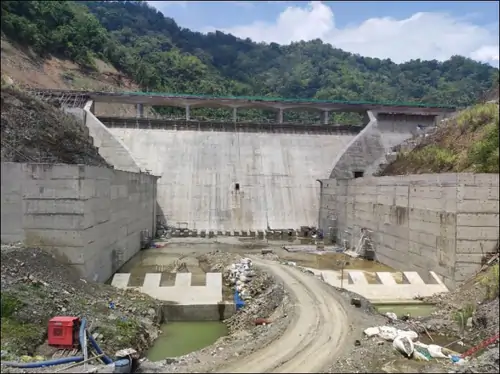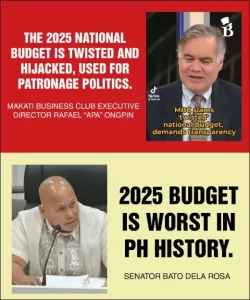
Table of Contents
Introduction: Funding for Big Dam Projects- 2025
President Ferdinand R. Marcos Jr. recently committed to ensuring sufficient Funding for Big Dam Projects construction in the Philippines. This bold initiative aims to address multiple national needs, including irrigation, water supply, and climate resilience.
His statement, “The big dams. We need to have that,” underscores the urgency of this infrastructure development.
The Importance of Big Dams

Big dams play a critical role in national development. They provide essential irrigation for agriculture, secure water supplies for communities, and help mitigate flooding. Furthermore, dams can support renewable energy generation, boosting the country’s energy security.
For a nation like the Philippines, with its agricultural economy and susceptibility to natural disasters, these infrastructures are vital.
Key Highlights from the NIA Meeting
During a recent meeting with officials from the National Irrigation Administration (NIA) at Malacañang Palace, President Marcos emphasized the significance of constructing large dams. NIA Administrator Eduardo Eddie Guillen presented the agency’s strategic plans for 2025, focusing on:
- Enhancing irrigation efficiency.
- Maintaining continuous operation of existing irrigation systems.
- Improving service roads along irrigation canals.
The President’s assurance of government support highlights his administration’s commitment to long-term infrastructure development.
Funding Allocations for 2025
NIA’s 2025 programs and projects (PAPs) outline significant funding allocations:
- PHP20.84 billion for the Pump Irrigation Sub-Program.
- PHP7.88 billion for Stage 2 of the Ilocos Norte-Ilocos Sub-Abra Irrigation Project (INISAIP).
- PHP2.49 billion for the Balog-Balog Multipurpose Project Phase II in Tarlac.
- PHP99.5 million for the Special Irrigation Sub-Program.
President Marcos confirmed that the 2025 General Appropriations Act allocates PHP22.882 billion in savings to support these projects.
Future Plans and Goals
The government aims to complete three to five large dam projects by the end of Marcos’ term in 2028. Priority projects include:
- Tumauini River Multipurpose Project in Cagayan Valley.
- Panay River Basin on Panay Island.
- Other significant projects in the Ilocos Region.
In addition to these large-scale projects, NIA plans to develop approximately 20 medium-scale irrigation systems to enhance agricultural productivity and resilience.
Technological and Climate Resilience Measures
To address the challenges posed by climate change, NIA will incorporate modern technological interventions and climate-resilient designs into its projects. These advancements aim to:
- Reduce the impact of extreme weather events on irrigation systems.
- Optimize water resource management.
- Ensure long-term sustainability of infrastructure investments.
Conclusion
President Marcos’ commitment to Funding for Big Dam Projects reflects his administration’s dedication to sustainable development and economic resilience. These projects will provide essential irrigation, strengthen water security, and mitigate the impacts of climate change, ensuring a brighter future for the Philippines.
FAQs
1. Why are Funding for Big Dam Projects important for the Philippines?
Big dams are vital for the Philippines as they support agricultural productivity by providing consistent irrigation, ensure a steady water supply for households and industries, and mitigate flooding in vulnerable areas.
Additionally, they have the potential to generate hydroelectric power, contributing to the country’s renewable energy goals. These dams are crucial for building climate resilience and fostering sustainable economic growth.
2. How much funding is allocated for dam projects in 2025?
The government has allocated approximately PHP22.882 billion for irrigation projects under the 2025 General Appropriations Act. This includes PHP20.84 billion for the Pump Irrigation Sub-Program and PHP7.88 billion for major initiatives like the Ilocos Norte-Ilocos Sub-Abra Irrigation Project.
These funds aim to enhance irrigation efficiency, modernize infrastructure, and support agricultural development.
3. Which dam projects are prioritized for completion by 2028?
The government has prioritized three to five major dam projects for completion by 2028. These include the Tumauini River Multipurpose Project in Cagayan Valley and the Panay River Basin on Panay Island. Additional projects in the Ilocos Region and 20 medium-scale irrigation projects are also planned to strengthen water and agricultural systems nationwide.
4. What measures are being taken to address climate change?
NIA is integrating advanced technologies and climate-resilient designs into its projects to mitigate the adverse effects of climate change.
These measures include the use of modern irrigation systems, improved water management strategies, and infrastructure capable of withstanding extreme weather conditions. Such initiatives aim to ensure the long-term sustainability and effectiveness of the projects.
Disclaimer
This article: Guaranteed PBBM Secures Funding for Big Dam Projects- 2025 is based on information from the Presidential Communications Office (PCO) and other reliable sources as of January 2025. Details may change based on project updates or government policies.
TechWirings does not endorse or explicitly support any views or actions expressed in this content.










